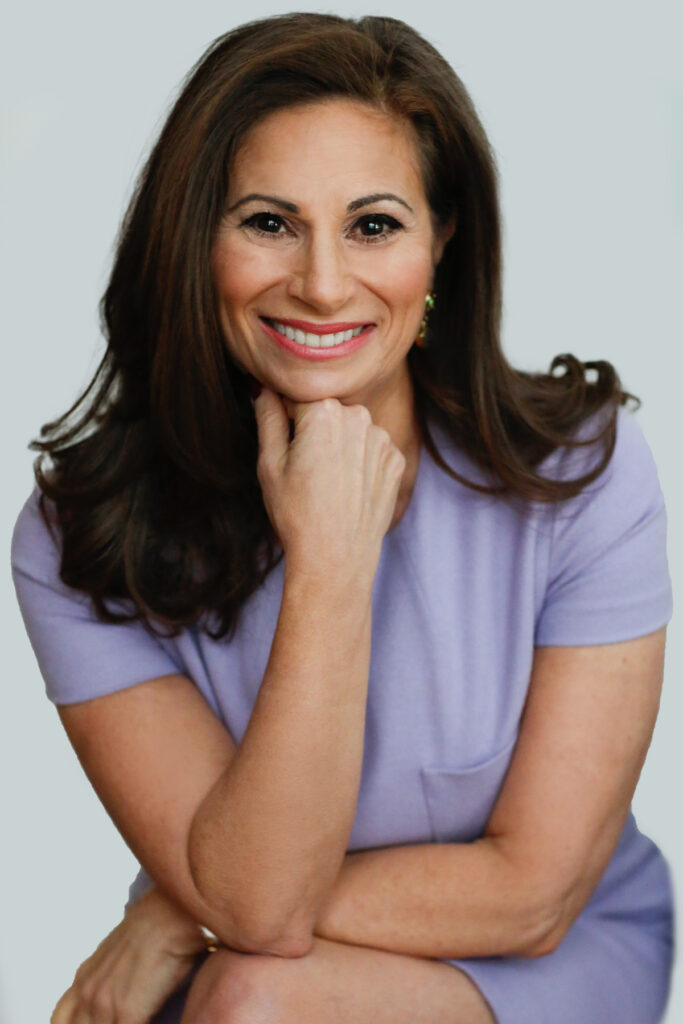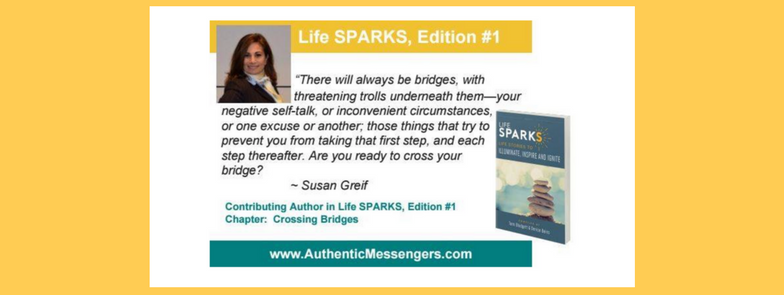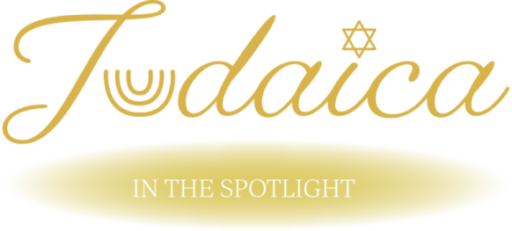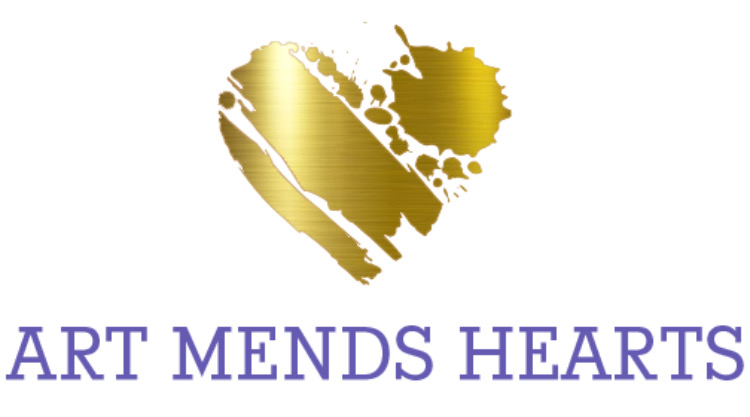
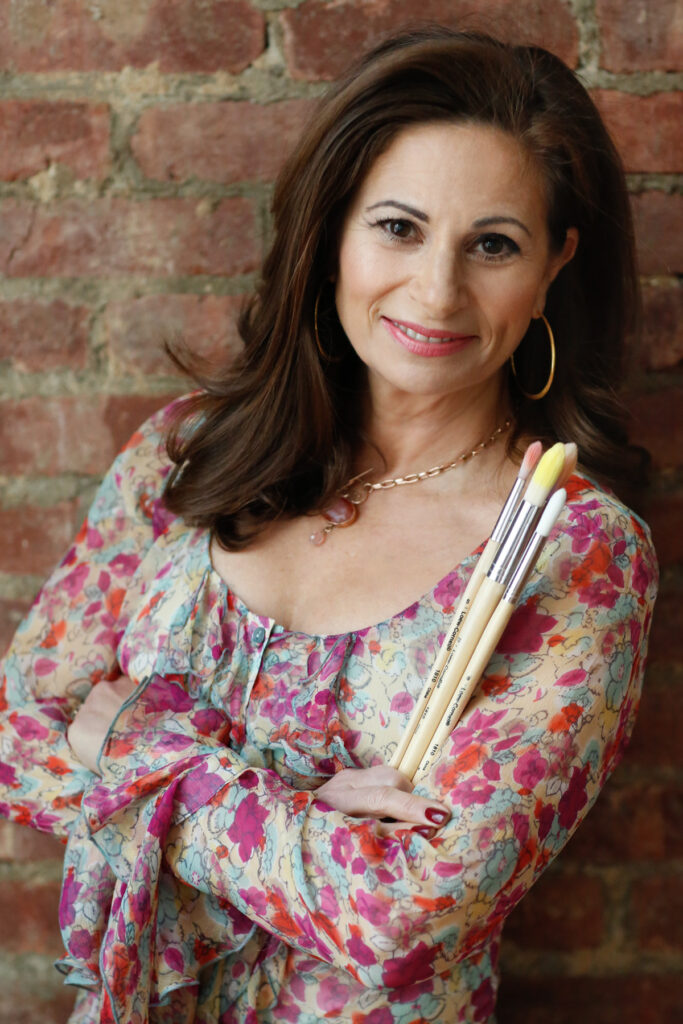
Susan Greif is a “Creative Transformational Expert and Healing Arts Professional,” who uses her unique multidisciplinary approach to help women and children find emotional freedom from the ravages of anxiety, depression, trauma, and relationships. Her goal is to see her clients let go of old stuck energies that keep them feeling powerless, paralyzed, panicked, and in pain. The expressive arts make thoughts and emotions more perceptible so her clients can see their ‘subconscious’ almost immediately and therefore, quickly enable them to live a happier, healthier, and more balanced lifestyle, with a mended heart. Susan is the Healing Arts Expert on the CYACYL advisory team an author, writer and a monthly contributor to NY#1 iHeartRadio and 970AM TheAnswer and to 24/7 Digital Magazine. Susan is an inspirational speaker and a member of the NYC Salon Speaker, curated by Tricia Brouk, as well as, a World Happiness Summit Coach.
Tell us a little bit about yourself and your background.
I am a daughter of Holocaust Survivors. I grew up in a traditional home where expectations were clear: follow the rules, keep a low profile, and don’t make any noise. As a child, I took dance lessons, which I loved and excelled in. Unfortunately, my participation soon came to an end because I went to a Jewish Day School and there was “no time for dance.” That’s my first memory of having something get squelched that I felt really passionate about. Later, in high school and college, I discovered the opposite – true fulfillment of a passion on all levels: cheerleading. Being a cheerleader was the perfect outlet for expressing my love of dance, performance, and mutually supportive relationships – I thrived in that environment where I was both giving positive energy to, and receiving it from, members of my squad on a daily basis. Nothing prevented me from indulging this passion, and I felt gratitude for every minute of the experience.
After graduating from college with a major in Biology and minor in Psychology, all set to start my dream of attending dental school, I ended up quitting the highly male-dominated program the day after orientation because it just felt all wrong to me. It was another dream squelched, but the cosmic reason for it was soon revealed, because within the next five years I got married and had four children. For years, I was blessed to be able to be a stay-at-home-mom, which was exactly what I wanted at that time.
Dabbling in a variety of “mom” oriented classes to keep my body and mind exercised, I continued to study dance, drama, writing, art and photography. Then one day I happened to ask my 10-year-old daughter what she wanted to be when she grew up, and her answer brought me up short: “I want to be a mommy like you and do nothing all day.” It was a stab to my heart to think that’s how my child saw me, especially since I was locked in to this very traditional role for the foreseeable future. It clashed painfully with my self-concept, since I thought of myself not as “just a mom” but as “almost a doctor.”
I always knew in my heart there was another important purpose in store for me down the road, once the child-raising phase of my life was completed. As fate would have it, at the time of this conversation with my daughter my temple was arranging a mission to a refugee camp in Macedonia for Albanians fleeing ethnic cleansing in their homeland. This was a notion all too familiar to me, as it resonated with the Holocaust.
When I heard about it, I impulsively decided to join the mission with my camera in hand. I needed to do something important, right then and there.
While my camera documented the serious side our mission, the camp leaders provided creative outlets such as art, dance, song and play. I had no idea then that this was creative therapy, I just thought it was cool. There were journalists with us who asked for my photos, and by the time I returned home my photos were being published in newspapers and magazines, accompanied by exhibits in galleries and museums, where all exhibit donations went to the Albanian survivors. I felt blessed and energized, and decided I want to become a photojournalist. After hearing my pronouncement my husband asked me, “Where do you think you’re going, with four children under the age of 10?” Yet another dream squelched.
For the next several years I turned inward. I took more classes: yoga, meditation, breathing, energy healing, and studied the science of medical intuition. Yet I still felt unsatisfied. I needed to use my mind, I needed to help others! I needed more but I wasn’t sure what form that should take. When my last child was in high school, I worried what would become of me as an “empty nester.”
Then one day my husband said, “I know what would make you happy: volunteering to sit with children and draw.” That was my big AHA! moment. I recalled that two years prior, a friend who was taking a creative arts therapies certification course had recommended I take that course. I’d toyed with the idea but never applied. But immediately after my husband made that suggestion, at 40 years old, I applied and got in, and soon was on my way to pick up notebooks and pens. I studied both art and dance/movement. Sitting in the classrooms created such harmony within me – everything made sense! I felt like that annoying child in the back of the room who constantly raises her hand, because she feels the right answers implicitly and wants to share them. Everything I’d learned and experienced to that point was funneled into this one program, and everything I’ve done since then evolved from it.
What inspired you to start your business, Art Mends Hearts?
My first client was a 3-year-old girl in the inner city school system. I was doing my internship and this little girl was in my art class. She didn’t speak, she just grunted. She was being pushed around by some other kids, and had become very protective. As the mother of two boys who went to speech therapy, I used certain tactics from that experience to see if she could hear, understand and speak. When she responded to me, I soon understood, “Yes, she can use her words. That’s where we’ll start.” I sat with her each day and tried to get her to repeat certain words that imitated her actions. She grew to trust me. One day, she randomly came over to me and spontaneously asked me to wash her hands. That was the moment when I realized this wasn’t a one-way benefit; we were giving each other a gift.
I was then asked to work one-on-one with her. Reading her records, I learned she had selective mutism, an anxiety disorder freezing her from speaking. Applying that context to selecting my activities with her, the two of us colored, played and acted out together. After she demonstrated how she and her father lie down in bed together, I learned there was an order of protection against her father. I also realized she had word retrieval issues. I recommended that she have follow-up sessions with a social worker and speech therapist. I only knew this particular girl for four months, but I feel I made an impact on her. If so, she’ll never know it was me and I’m ok with that.
After I completed my internship, I turned to my children’s elementary school, volunteering to work with kids with dyslexia and emotional issues. The first thing the principal suggested was to create business cards. I scanned the cover of one of my previous case reports for class. The name of that report was “Art Mends Hearts,” and I used the cover drawing as my original logo. Then off I went to VistaPrint.com and ordered my first set of business cards…and that’s how Art Mends Hearts began.
What fascinates you the most about your chosen line of work?
How quickly people are able to gain insight to what keeps them stuck in their ways. When they use my tools and strategies, they transform those old patterns in no time.
What does a typical session with you look like? Do you offer one-on-one sessions, group sessions, or both?
I offer one-on-one, couples, and mother/daughter sessions, as well as group workshops. I can also do sessions online. A typical first session starts with some history. I teach them a breathing technique designed to calm anxiety. I then lead them into a regressive state to when they were five years old. I ask them to think about their family, and to tune into all five senses. I have them draw their image – called a Family Kinetic Drawing (no talent or experience needed). Afterwards I ask them to journal the thoughts and emotions that have come up for them.
Then I ask them some questions based on what I see in their drawing. I’m careful not to make assumptions that I know what their drawings mean to them – it’s all about their input, since it’s a reflection of them, not of me. Once I know we’ve honed in accurately on the substance of the challenge behind their drawing and writing, we identify appropriate goals that will motivate them to make changes, and discuss strategies for achieving those goals. They usually leave the session with thought-provoking questions they need to journal, plus new awareness- and habit-building tools to implement over the week.
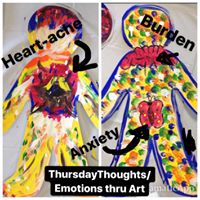
© Susan Greif 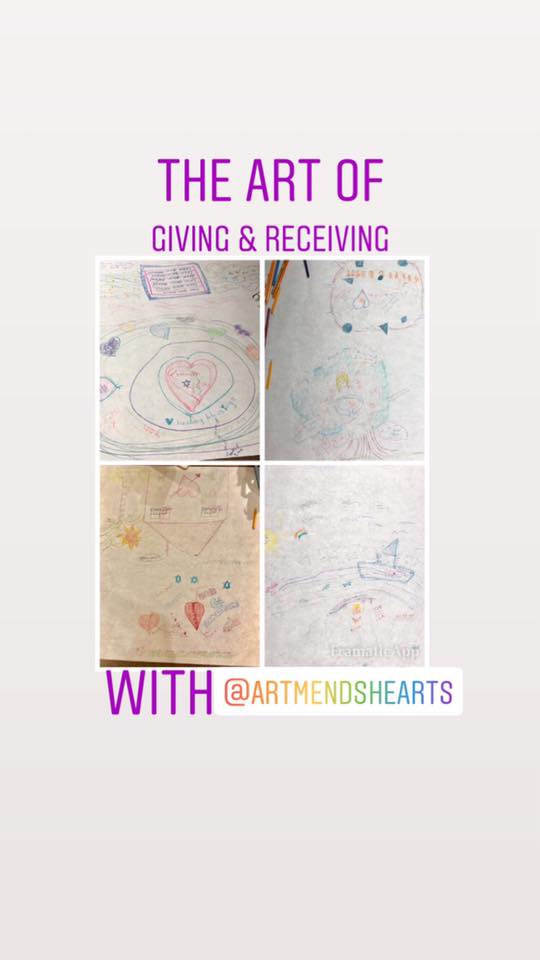
© Susan Greif 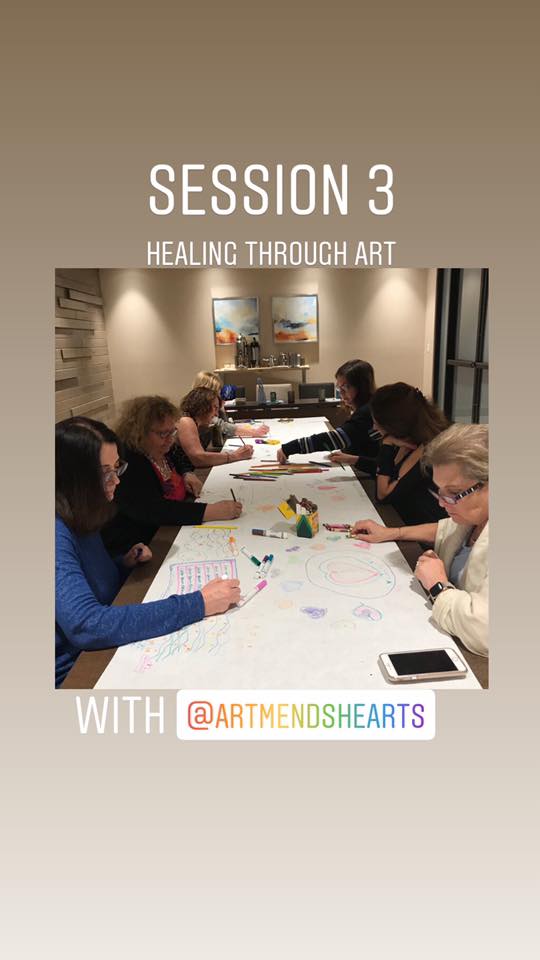
© Susan Greif
Do you give people the choice what materials they may use for their drawings?
Yes, most of the time I let them choose their materials; their choice of medium gives me insight to their personality. Sometimes when I do couples or groups I will decide, if the medium is key to drawing forth certain kinds of information or interactions.
Do you let people draw freely or do you give them a topic?
I always offer them a prompt. Usually it relates to what we are discussing. Sometimes, when I am not set on a particular prompt, I’ll ask them to do scribble art, find the images within and write a story about it. That always reflects what’s on their mind.
What do you focus on while analyzing a drawing?
I notice the medium they choose, the colors, placement of elements within the drawing, the brush or pen strokes and pressure applied, and the size. I look for what’s omitted, what’s odd, what patterns are repeated and what stands out, in addition to the symbols and the metaphoric meanings behind them. After my client draws, I ask them to write about their drawing, including what thoughts and emotions come up. As I said before, I avoid making any assumptions; it’s absolutely essential to have the client’s perspective, because the client is the one who has the answers. But those answers are usually on the subconscious level, and it’s my role to bring them to light. I use the combination of the drawing itself and their written answers to my questions in guiding their journey of discovery. Each journey is uniquely personal, and the creative process adds an element of the unexpected to every session.
Do you continue drawing through your program or does it switch at some point to talk therapy?
It depends on the person and what works best for them. Typically, I use drawing during the first few sessions and return to it intermittently in later sessions. I also include talk, writing and movement, plus structured play for younger clients. I add in breathing, meditation, chakra and energy work for those who are open to it.
How many sessions does an average client of yours need until they are able to let go of the past?
I ask my clients to commit to ten sessions, because it’s really important to be consistent. That way the client is held accountable to the homework assignments I offer them. When they are consistent, and are willing to take small steps to make a change, usually they can let go of some parts of their past in ten sessions. It really depends on how much of their past they are choosing to hold on to, and how tight of a grip they have on it.
What techniques can you recommend our readers who have a very hard time letting go of past traumas?
There are several techniques. But first we need to understand where the trauma truly came from. For example, was it from someone who was abusive? Was it from an illness, or from a loss? Initially, we need methods and actions to empower ourselves. Then we need to understand and empathize with the people who contributed to our traumas in some way – the poor souls who were abusive or abandoned us – because we need to believe their upbringing also may have been abusive, and they never conquered their own demons in order to heal themselves. If we can learn to see them as a wounded child, we can feel more empathy for them.
We also need to understand the trauma, the darkness. It’s only through darkness that we can see light. We need to discover two things: what was the light that came from the darkness, and what lessons have we learned from those people in our life? Though no one chooses to have these traumas, we can choose to learn how to survive and thrive. Perhaps these lessons become our life purpose. We need to forgive, and to be thankful for those lessons.
What are your wishes for the future?
My wish is that all people will let go of the negative thoughts that bring us down, and find our tribe of like-minded souls. My wish is for people to turn their trauma into something better, for the good of all. My dream is they will all use their past pain, and the inspiring message of surviving and thriving, to help others survive and thrive. It’s a “pay it forward” message. I believe that as a collective group we raise the positive energy on the planet, and lift each other up. So we need to find gratitude in every day, and offer kind gestures without expecting anything in return. Love comes from the heart, and the heart is rhythmic; it gives and it receives. We likewise must give and receive. That’s why we need the social connection of a tribe and its energy, to lift each of us up from our own deep, dark holes called “trauma.”
Where can we learn more about your work and how can our readers reach you?
